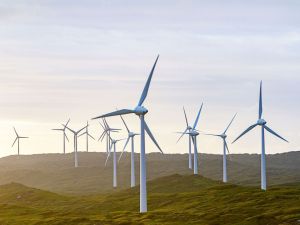China is going through a difficult economic patch. High levels of youth unemployment, a slump in the housing market and sluggish economic growth are putting Beijing under pressure, while GDP for the period between April and June grew but just 0.4% when compared to 2021.
This is the worst performance seen in China since 1992, if we ignore the seismic contraction caused by Covid-19 in the first quarter of 2020. The predicted 1% increase failed to materialise, while the 4.8% growth seen in the first quarter of 2022 feels like a distant memory.
The difficult economic situation was put into sharper focus by the Chinese Statistics Agency, which highlighted the fact that downward pressure on the economy has increased significantly since the first quarter. The basis for a sustained economic recovery is looking unstable.
Economic uncertainties could also have repercussions for the Communist Party, which is in its own particularly delicate moment. A thriving and robust economy was a large part of the pact that Chinese citizens had signed with the current government and, currently, that element is faltering. So far, it appears the near-immediate recovery seen after the first wave of Covid-19 is unlikely to be replicated. Factors like youth unemployment, a stuttering real estate market and struggling small businesses all suggest that it may be some time before China recovers.
China’s industrial production falls below market consensus
In June, Chinese industrial production increased by 3.9% year-on-year, falling below the market consensus of 4.1%. Another growth figure in production saw an increase in the manufacturing sector (3.4% against 0.1% in May), the public services sector (3.3% against 0.2%), and in mining production (8.7% vs 7.0%).
Real estate
China’s real estate market has been going through a difficult period since late 2021. Following the Evergrande case, other giants have followed in its wake, further weakening the national picture. Inevitably, this had an impact on consumers who had bought homes before it was over.
The country has even seen public demonstrations around the issue, with citizens starting to declare to banks and regulators that they will withhold mortgage payments, given the delay in delivery and the collapse of the real estate market. In response, China’s banking and insurance regulator announced that it will work with central government and local authorities to ensure building projects are completed, jobs are saved and the real estate sector is stabilised.
Protests don’t tend to bode well for economic improvement. Chinese economic growth suffered a sharp slowdown in Q2, and if we then add fears of a global recession into the mix along with rising inflation in the US and Europe, the situation is not guaranteed to improve any time soon.
What to expect going forward
The Chinese economy is not in a brilliant place and its growth is under threat from numerous factors and political choices.
Unemployment record & zero-Covid policy
Youth unemployment rose to 19.3% in June, a new (negative) record for China. In March and April, total or partial lockdowns impacted a few of the major centres of the country, including Shanghai, which saw an annual GDP contraction of 13.7% in the second quarter. Production in the capital also fell, by 2.9% on an annual basis.
The positive here is that most restrictions were lifted in June and economic data did show signs of improvement. A rapid economic recovery does seem unlikely, however, unlike the sharp growth we saw following the first wave of Covid-19 infections.
The official growth target was around 5.5% for 2022, a figure that will be difficult to achieve if China’s zero-Covid strategy remains in place. In fact, forecasts are predicting a slowdown of 4% and Chinese financial markets are restless, shares are swaying and the Yuan has dropped to its lowest point (against the dollar) since September 2020.
How does this affect portfolios?
China is slowly beginning to emerge from months of lockdowns (a consequence of its zero-Covid policy), and in June the economy showed signs of recovery, but two key risks remain.
- Firstly, the government is yet to abandon the zero-Covid policy, which could lead to more closures if another wave of the virus takes hold.
- Secondly, there is seemingly no change to the Chinese position on the nationalisation of listed companies, which caused volatility in the markets last year.
Our portfolios invest in Chinese equities primarily through our emerging market equity ETFs. Within this asset class, Chinese equities weigh around 35%. However, we have moderate direct exposure to this geographical area when we consider that overall weight of emerging equities (10-12% of the equity component) in our portfolios.
This geography remains attractive in terms of price / earnings, for example but we’re monitoring the situation closely. The risks associated with fresh Covid-19 restrictions and the political narrative remain high, even when considered against the devaluatioin of the last two years.





